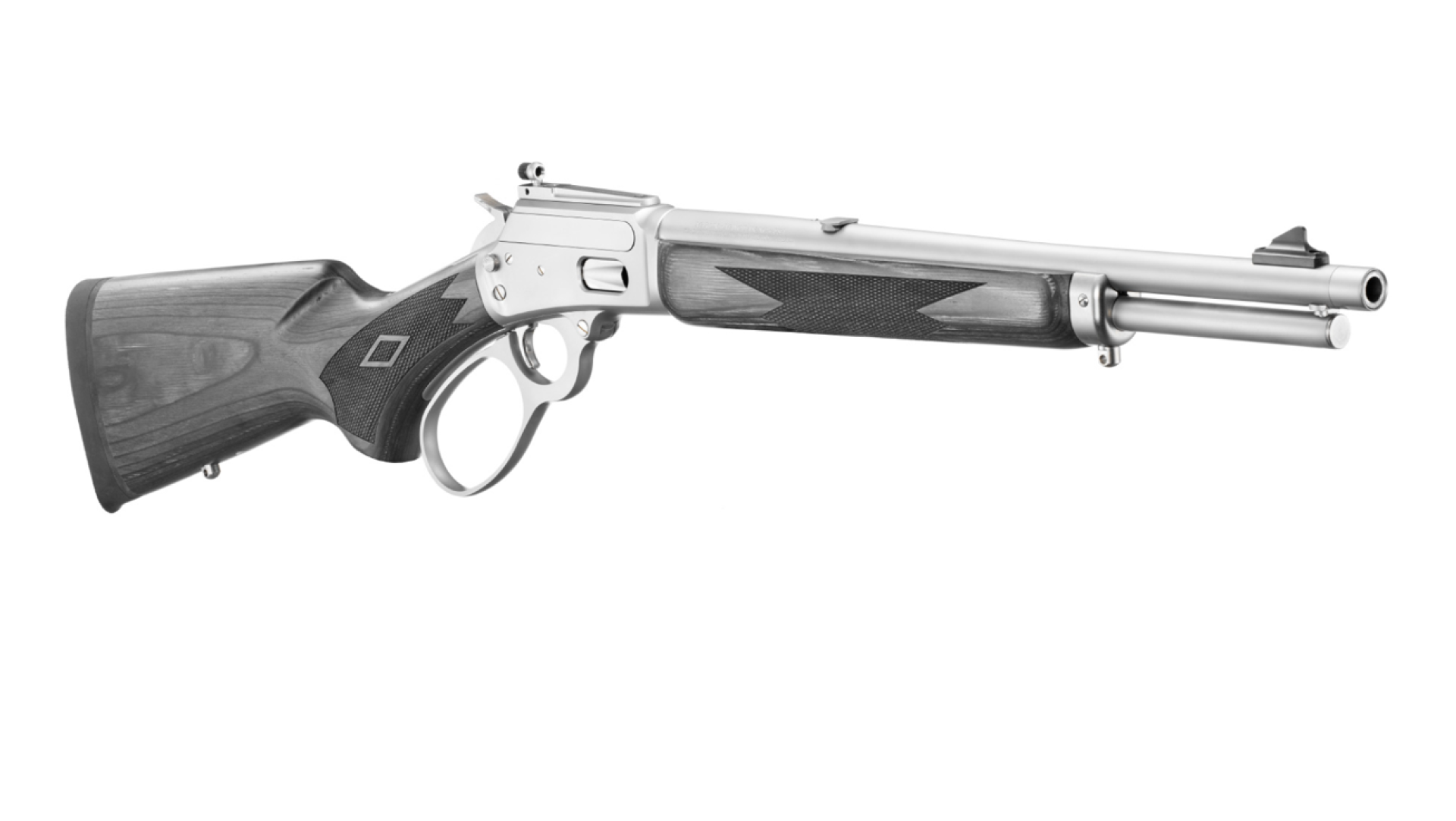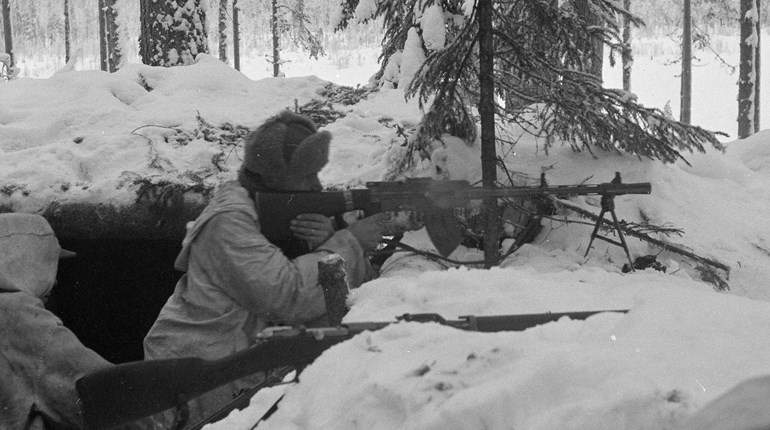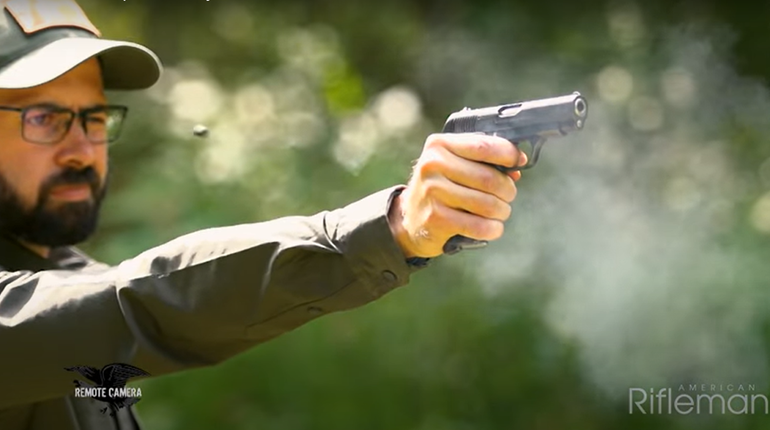
World War I (1914-1918), optimistically known as the “War to end all wars,” was fought mainly on European battlefields, pitting Germany, Austria-Hungary and their allies against France, Britain, Russia and their allies. Trying to remain neutral, the United States eventually entered the war in 1917 on the side of the Triple Entente (France, Britain, Russia.)
For the young men faced with fighting for their various countries, the war on both sides of the battlelines was a hellish nightmare spent in hundreds of miles of muddy trenches, the opposing armies separated by a no-man’s land filled with barbed wire and poison gas. An estimated nine million soldiers were killed during combat, and an additional five million civilians died as a result of the war.
Of the three major rifles fielded in World War I, it’s been said by firearms historians that the Germans brought a hunting rifle, the British brought a battle rifle, and the Americans brought a target rifle. Those rifles, respectively, were the German Gewehr 1898 Mauser, the British #1 MK III SMLE Enfield and the American Model 1903 Springfield. Given the firearms technology of the day, the American Army could not have made a better choice, as the Model 1903 Springfield is arguably the finest bolt-action military rifle of all time.
Officially designated the U.S. Magazine Rifle, Caliber .30, Model of 1903, the Model ‘03 Springfield had a full-length wooden stock, 24-inch barrel, flip-up rear sight, a leather sling, and was capable of holding five rounds of .30-06 Springfield ammunition in a clip. (Yes, a clip, not a magazine.) Weighing nearly 9 pounds, the rifle was famous for its extreme accuracy. So much so, that it was used by American competitors during shooting matches at the 1912 Summer Olympics in Stockholm, Sweden. In the 1919 book titled American Munitions 1917-1918, the author, Assistant Secretary of War Benedict Crowell, wrote:
“America, since the days of Daniel Boone a nation of crack shots, was naturally the home of good rifles. Hence…it is not surprising that the United States should be the nation to produce the closest-shooting military rifle known in its day. This was the United States rifle, model of 1903, popularly called the Springfield.
“There is no questioning the superiority of the Springfield in point of accuracy. Time after time we pitted our Army shooting teams against those of other nations of the earth and won the international competitions with the Springfield…Much credit is to be said for the men behind the guns, but due credit must be given to the rifles that put the bullets where the marksmen aimed.”
The Model 1903 Springfield proved itself on the battlefield as well as on the firing range. Many times during the war it was reported by American officers that when their soldiers were able to flank or maneuver completely behind enemy machine guns, they could often make accurate, long-range shots with their Springfields to silence the enemy guns.
Furthermore, dependability of the rifle under difficult combat conditions was seldom an issue. According to World War I combat veteran First Lieutenant Samuel W. Meek, “…the Springfield was a great weapon. Not only was it accurate, but it rarely jammed…it seemed to absorb the dirt and still work…and dirt was something we were always living in.”
Versatility was another of the gun’s attributes. Mounting a telescopic sight on the already-accurate gun made it a deadly sniper rifle. It could also be adapted as a grenade launcher, which proved very valuable in trench warfare. The Model 1903 could even be converted to a semiautomatic action by simply removing the bolt and replacing it with a “Pedersen Device.” By doing so, the rifle was then capable of firing a small .30-caliber cartridge similar to the Colt .32-caliber ACP (Automatic Colt Pistol).
But the ultimate “Rube Goldberg machine” developed for the rifle was a device that allowed a shooter to aim and fire the Model 1903 without exposing his head and shoulders above the top of trenches. Named for its two inventors, the Cameron-Yaggi periscope rifle mounted a standard Model 1903 on a metal frame that rested on the shooter’s shoulders, elevating it about a foot above his head. The bolt and trigger were manipulated by levers, and the rifle was sighted by looking through a periscopic-like device. An extended magazine permitted the shooter to fire 25 rounds before the rifle had to be taken down and reloaded. The U. S. Ordnance Department tested several such devices, but none were adopted before World War I ended. Today, examples of trench periscope rifles are extremely rare, and as a result highly collectible.
Following World War I, the Model 1903 Springfield became popular with big-game hunters; again, for its accuracy, but also for the stopping power of the .30-06 cartridge. The famous 20th Century author Ernest Hemingway took one of the rifles along with him during his first African safari in 1933.
At the beginning of World War II, the Model 1903 Springfield was still the standard U.S. service rifle until the M1 Garand was fully adopted by 1943. The Garand (its pronunciation rhymes with “errand”) uses the same .30-06 Springfield ammunition as the Model 1903, but is semiautomatic, allowing soldiers quicker follow-up shots from an eight-round clip.
As excellent a weapon as the Model 1903 Springfield was, the M1 Garand was better. General George S. Patton said of it, “In my opinion, the M1 rifle is the greatest battle implement ever devised.” And thus, the classic ’03 Springfield was forced to step aside, gradually fading into firearms history.
An interesting final sidenote concerning World War I ties into our current COVID-19 pandemic. Just as the COVID virus has been spread worldwide through international travel, the Spanish Flu pandemic of 1918 was spread worldwide by the movement of troops around the globe during the war, increasing the number of both military and civilian deaths as a result of the “War to end all wars.”






































